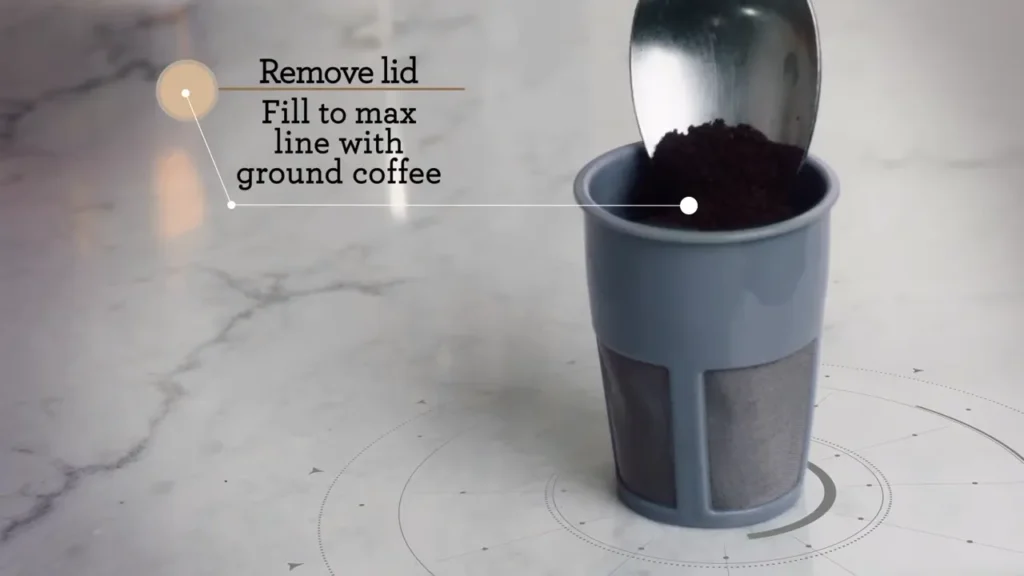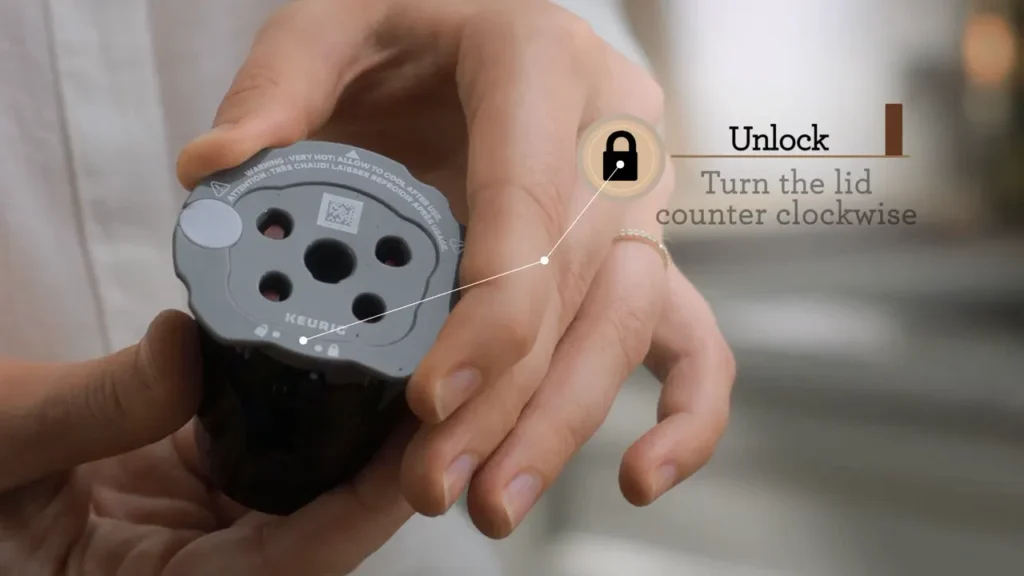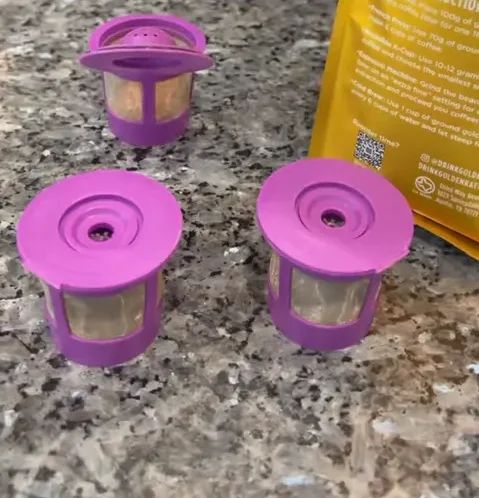Reusable K Cups have revolutionized the way we consume coffee, blending convenience with environmental consciousness. In a world where single-use coffee pods have raised concerns over waste, reusable K Cups offer a sustainable alternative. These devices not only reduce waste but also open up a world of coffee choices far beyond pre-packaged options.
Do reusable K Cups need filters? The short answer is, it depends. Most reusable K Cups come with built-in filters, making additional filters unnecessary. However, some coffee aficionados prefer using an extra paper filter for a smoother taste and finer filtration. This choice often hinges on personal preference and the specific design of the reusable K Cup.
The rise of reusable K Cups is more than just a trend; it’s a response to the growing demand for eco-friendly and cost-effective coffee solutions. These cups allow users to enjoy their favorite coffee grounds, offer better control over coffee strength, and significantly reduce the environmental impact of their coffee consumption habits.
## Overview of Reusable K Cups
In the realm of coffee, the advent of **reusable K Cups** has marked a significant shift towards sustainability and customization. These innovative cups are not mere accessories; they represent a crucial evolution in modern coffee culture. With increasing awareness around environmental issues, the coffee industry has been under scrutiny for its contribution to waste, primarily through single-use coffee pods. Reusable K Cups address this issue head-on, providing an eco-friendly alternative that doesn’t compromise on convenience or quality.
The importance of reusable K Cups in modern coffee culture cannot be overstated. They are pivotal in reducing the environmental impact of our daily coffee habits. In an era where consumers are more environmentally conscious, these cups offer a way to enjoy the convenience of single-serve machines while minimizing waste. Furthermore, they resonate with the growing trend of personalized coffee experiences, as they allow coffee lovers to use their preferred coffee blends, adjusting the strength and flavor to their liking.
## Reusable K Cups Explained
### What Are Reusable K Cups?
Reusable K Cups are a groundbreaking solution designed for single-serve coffee machines. Unlike traditional disposable pods, these cups can be filled with any ground coffee, used, cleaned, and then reused. Made from durable materials, they fit into most single-serve coffee machines and are easy to use. This adaptability not only makes them versatile but also an essential tool for any coffee enthusiast looking to reduce their environmental footprint.
### Benefits Over Disposable Pods
The advantages of reusable K Cups over disposable pods are numerous:
1. **Environmental Impact**: They significantly reduce waste compared to single-use pods, which are often not recyclable and contribute to landfill.
2. **Cost-Effective**: Investing in reusable K Cups can lead to substantial savings over time, as buying bulk coffee is generally cheaper than purchasing pre-packaged pods.
3. **Flavor Customization**: They allow users to experiment with various coffee grounds, blends, and strengths, tailoring each cup to personal preferences.
4. **Quality of Coffee**: Many users find that coffee brewed in reusable K Cups tastes better, as they can choose higher-quality grounds than what might be found in standard pods.
## Composition of Reusable K Cups
### Materials Used
The construction of reusable K Cups typically involves high-quality, durable materials such as stainless steel and BPA-free plastic. These materials are chosen for their longevity and safety, ensuring that the cups can withstand the high pressure and temperature of coffee machines without leaching harmful chemicals.
### Design Features
The design of reusable K Cups is carefully considered to ensure compatibility with standard single-serve coffee machines. They usually feature a lid that securely closes to prevent any leakage or spillage during brewing. The size and shape are meticulously crafted to fit seamlessly into the machine’s pod compartment.
## Filter Mechanism in Reusable K Cups
### Built-in Filters
One of the key components of reusable K Cups is the built-in filter. This filter is integral to the design, serving to separate the coffee grounds from the brewed coffee. These filters are often made of fine mesh stainless steel, which is effective in preventing coffee grounds from entering the brew, ensuring a smooth and pleasant coffee experience.
### Varieties in Filter Type
The type of filter in a reusable K Cup can vary, and each type has its own set of characteristics:
– **Stainless Steel Mesh Filters**: These are the most common and are known for their durability and ease of cleaning. They allow the natural oils and fine coffee particles to pass through, resulting in a richer coffee flavor.
– **Paper Filters**: Some users opt for paper filters, which can be used in conjunction with reusable K Cups for a cleaner cup of coffee, free from any coffee sediment. Paper filters are especially preferred by those who enjoy a smoother, lighter brew.
– **Charcoal Filters**: A few models come with charcoal filters, which are known for their ability to remove impurities from water, enhancing the overall taste and quality of the coffee.
## Do Reusable K Cups Need Additional Filters?

The question of whether reusable K Cups need additional filters is a subject of interest among coffee enthusiasts. While many reusable K Cups come equipped with built-in filters, the decision to use an additional filter depends on various factors, including personal taste preferences and specific coffee brewing requirements.
### The Necessity of Additional Filters
The necessity for additional filters in reusable K Cups hinges on the desired quality of the brew. Some users find that the built-in filters are sufficient in providing a clean, rich taste. However, others opt for an extra layer of filtration to achieve a specific texture and clarity in their coffee. This choice often reflects a user’s sensitivity to the fine grounds and oils that can sometimes pass through reusable K Cup filters.
### Comparing Brews: With and Without Additional Filters
Comparing coffee brewed with and without additional filters reveals noticeable differences:
– **With Additional Filters**: Coffee tends to be smoother and clearer, with less sediment. This is particularly beneficial for those who prefer a lighter, crisper cup of coffee.
– **Without Additional Filters**: Coffee maintains a richer body, preserving the oils and fine grounds that contribute to a fuller flavor profile. This method is often preferred by those who enjoy a bold and robust brew.
### Impact on Coffee Quality
#### Flavor and Aroma Considerations
The use of additional filters in reusable K Cups can significantly impact the flavor and aroma of the coffee:
– **Flavor**: Additional filters can strip away some of the coffee’s natural oils, which carry much of the flavor. This can result in a cleaner, but potentially less complex flavor profile.
– **Aroma**: The oils and fine particles that pass through built-in filters contribute to the coffee’s aroma. Additional filtration may reduce this aromatic complexity.
#### Health and Safety Aspects
From a health perspective, using additional filters in reusable K Cups is safe. Paper filters, in particular, can reduce the amount of cafestol, a compound in coffee linked to increased cholesterol levels. However, for the average coffee drinker, this is usually not a significant concern.
## Types of Filters for Reusable K Cups
### Paper Filters
Paper filters are a popular choice for those seeking a cleaner cup of coffee. They are effective in filtering out fine coffee grounds and oils, leading to a smoother and lighter brew. Additionally, paper filters are disposable, making them a convenient option for those who prioritize ease of cleaning.
### Permanent Filters
Permanent filters, typically made from stainless steel or other durable materials, are designed for long-term use. They are more environmentally friendly than paper filters and can be a cost-effective solution over time. Permanent filters allow more oils and fine particles to pass through, resulting in a richer and more flavorful cup of coffee.
### Choosing the Right Filter
#### Factors to Consider
When selecting the right filter for a reusable K Cup, several factors should be considered:
1. **Coffee Preference**: Determine whether you prefer a smoother, cleaner cup or a richer, more full-bodied brew.
2. **Maintenance**: Consider how much time and effort you are willing to invest in cleaning the filter.
3. **Environmental Impact**: Reflect on your environmental priorities and whether a reusable filter aligns with your values.
4. **Cost**: Factor in the long-term cost implications of choosing disposable paper filters versus a one-time investment in a permanent filter.
#### Compatibility with Different Models
It is crucial to ensure that the chosen filter is compatible with your specific reusable K Cup model. Compatibility affects not only the ease of use but also the effectiveness of the filtration process. Incorrectly sized filters can lead to leaks, poor filtration, and an unsatisfactory coffee experience.
In summary, the decision to use additional filters in reusable K Cups is largely influenced by individual preferences and specific brewing goals. Whether opting for paper filters for a cleaner cup or embracing the full-bodied brew from a permanent filter, the choice significantly impacts the coffee’s flavor, aroma, and overall quality. Understanding these nuances allows coffee lovers to tailor their brewing experience to their unique tastes, enhancing the enjoyment of their daily coffee ritual.
## Usage and Maintenance of Reusable K Cups

Proper usage and maintenance are crucial for maximizing the lifespan and effectiveness of reusable K Cups. Understanding the right way to use and care for these cups ensures not only a consistently good cup of coffee but also contributes to environmental sustainability.
### Step-by-Step Guide for Using Filters
1. **Selection of Coffee Grounds**: Start by choosing your preferred coffee grounds. The grind size should be medium to coarse for optimal results.
2. **Filling the K Cup**: Open the lid of the reusable K Cup and fill it with coffee grounds. Avoid overfilling, as this can affect water flow and extraction.
3. **Placing the K Cup**: Insert the filled K Cup into the coffee maker, ensuring it sits securely in the pod compartment.
4. **Brewing the Coffee**: Select your desired brew settings on the coffee maker and start the brewing process.
5. **Removal and Disposal**: Once brewing is complete, carefully remove the K Cup. Dispose of the used coffee grounds and rinse the cup.
### Cleaning and Care Tips
– **Regular Rinsing**: Rinse the reusable K Cup with warm water after each use to remove coffee residue.
– **Deep Cleaning**: Periodically, use mild detergent and a soft brush to clean the cup and filter thoroughly.
– **Avoid Harsh Chemicals**: Refrain from using harsh cleaning agents, as they can damage the filter and cup material.
– **Air Drying**: After washing, allow the K Cup to air dry completely to prevent mold and odor buildup.
## Longevity and Sustainability
### Lifespan of Reusable K Cups with Filters
The lifespan of reusable K Cups can vary depending on the material quality and maintenance. Generally, a well-maintained K Cup can last for several years, making it a sustainable option compared to disposable pods.
### Environmental Impact
Reusable K Cups significantly reduce waste associated with single-use coffee pods. By using these cups, individuals contribute to lessening the amount of plastic and aluminum that ends up in landfills.
## Cost Analysis
### Initial Investment vs Long-term Savings
– **Initial Investment**: The upfront cost of purchasing a reusable K Cup may be higher than buying a box of disposable pods. However, this cost is offset over time.
– **Long-term Savings**: Using reusable K Cups with bulk-bought coffee grounds proves to be more economical in the long run compared to the recurrent purchase of disposable pods.
### Comparison with Disposable Options
In the long term, reusable K Cups are more cost-effective than disposable options. While the initial purchase price of disposable pods is lower, the ongoing cost accumulates significantly over time.
## Expert Opinions and User Experiences
### Insights from Baristas and Coffee Experts
Coffee professionals often advocate for reusable K Cups for their versatility and the quality of brew they produce. They emphasize the ability to experiment with different coffee grounds and strengths, tailoring each cup to individual preferences.
### Real User Testimonials
Users of reusable K Cups frequently praise their convenience and the quality of coffee they deliver. Many highlight the cost savings and the positive environmental impact as key benefits.
## Popular Myths Debunked
### Common Misconceptions Addressed
– **Myth: Reusable K Cups Compromise Coffee Quality**: Many believe that reusable K Cups compromise the quality of coffee. However, users and experts alike report that these cups can produce coffee that is as good as, if not better than, that made with disposable pods.
– **Myth: Reusable K Cups Are Difficult to Maintain**: Some think that these cups require extensive maintenance. In reality, simple regular cleaning is sufficient to keep them in good condition.
### Clarifying Facts
– **Fact: Variety of Coffee Choices**: Reusable K Cups allow users to choose from a wide variety of coffee grounds, not limited to pre-packaged options.
– **Fact: Environmental Benefits**: Using reusable K Cups considerably reduces waste and environmental impact compared to single-use pods.
## Summary of Key Points
Reusable K Cups are a sustainable, cost-effective, and flexible solution for coffee lovers. They offer the freedom to choose from various coffee grounds and the ability to adjust coffee strength to personal taste. Proper use and maintenance ensure these cups can provide quality coffee experiences for years, significantly reducing environmental impact and ongoing costs.
## Final Recommendations for Coffee Lovers
For coffee enthusiasts looking to balance quality, convenience, and sustainability, reusable K Cups are an excellent choice. They offer a practical way to enjoy your favorite coffee while contributing positively to environmental conservation. Embracing these cups means taking a step towards more responsible and personalized coffee consumption.
Do reusable K-cups wear out?
Yes, reusable K-cups do wear out over time. The lifespan of a reusable K-cup depends on several factors, including the material quality, frequency of use, and how well it is maintained. Generally, these factors contribute to the wear and tear of the product:
1. **Material Quality**: Reusable K-cups made of higher quality materials tend to last longer. Those made with sturdy plastics and stainless steel are more durable compared to those made with cheaper materials.
2. **Frequency of Use**: The more frequently a reusable K-cup is used, the quicker it may wear out. Regular use can lead to gradual degradation of the materials, especially the filter part which is integral to its function.
3. **Maintenance**: Proper cleaning and maintenance can significantly extend the life of a reusable K-cup. Regular washing and ensuring that the K-cup is completely dry before storage can prevent mold growth and material degradation.
4. **Type of Coffee Grounds**: The type of coffee grounds used can also affect the lifespan. Finer grounds, for instance, may put more strain on the filter over time.
While they do wear out eventually, reusable K-cups are designed to withstand many uses, making them a more sustainable and cost-effective option compared to single-use pods. When a reusable K-cup shows signs of wear, such as difficulty in sealing properly, decreased effectiveness of the filter, or visible damage, it’s time to consider replacing it.
### Frequently Asked Questions
#### Do All Reusable K Cups Have Built-in Filters?
Most reusable K Cups are designed with integrated filters to effectively separate coffee grounds from the brewed coffee. These filters are usually fine enough to prevent grounds from entering the coffee, ensuring a clean and enjoyable coffee experience.
#### Can I Use My Own Coffee with Reusable K Cups?
Yes, one of the primary benefits of reusable K Cups is the ability to use your own choice of coffee grounds. This flexibility allows for a more personalized coffee experience and can lead to significant cost savings compared to pre-packaged pods.
#### How Often Should I Clean My Reusable K Cup?
It’s recommended to clean your reusable K Cup after each use to maintain optimal performance and hygiene. Rinsing it under warm water and occasionally using mild soap helps prevent coffee oil buildup and ensures a fresh taste every time.
#### Are Reusable K Cups Compatible with All Coffee Makers?
While many reusable K Cups are designed to be universally compatible with a variety of coffee makers, it’s important to check compatibility with your specific model. Some cups are tailored for certain brands or models, ensuring a perfect fit and optimal brewing.
### Conclusion
Reusable K Cups represent a significant step forward in the world of coffee. They not only offer an eco-friendly alternative to single-use pods but also bring the richness and variety of ground coffee into the convenient world of pod machines. Their growing popularity is a testament to their effectiveness and the value they add to the daily coffee ritual.
The decision to use an additional filter with a reusable K Cup largely depends on personal preference and the specific design of the cup. While not always necessary, an extra filter can enhance the coffee’s smoothness and purity for some users. Regardless of this choice, the benefits of reusable K Cups are clear: they are cost-effective, environmentally friendly, and offer coffee lovers the freedom to choose their preferred coffee grounds.
In summary, reusable K Cups are more than just a coffee accessory; they are a smart choice for the environment, your wallet, and your palate. As we continue to seek sustainable solutions in our daily lives, products like reusable K Cups play a crucial role in balancing convenience with responsibility.


